The best beginner drones 2024: Begin your drone journey with the best drone for you
Don't let 'beginner' put you off — the best beginner drones have impressive capabilities. If you can wait until Black Friday, you will likely see some welcome price drops.
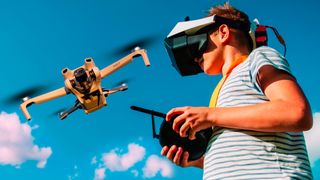
The best beginner drones market has seen some exciting drone releases recently, and it's safe to say that the options available are varied in many ways. Whether you're looking for something cheap and cheerful to get started or something with the best features and an amazing camera, there's something here for you.
Sub-250 g models are the most popular for beginners and quite often, also more advanced pilots who require a smaller and less restricted drone for certain types of flights. They're also small and lightweight, so carrying them around is much easier and more comfortable than larger models.
Also, in the US, you don't require FAA registration or a Remote ID for sub-250 g drones if they're being used recreationally, which is why they are so popular with beginners. Pilots in other regions should check requirements for sub-250 g models with your local aviation authority.
The best beginner drone, the DJI Mini 4 Pro, is packed with the latest technology, including a fantastic camera and advanced collision avoidance. But if you’re looking for something larger and more powerful, perhaps with an even better camera, check out our best camera drones, best beginner drones and best FPV drones guides where you'll find many alternatives that will undoubtedly suit your requirements.
You'll know by now that Black Friday and Cyber Monday is an annual salves event. Drones are likely candidates to see some of the best discounts. Keep an eye on our Black Friday Deals hub, where we will post the best beginner drone offers we spot throughout the event.
The Quick List
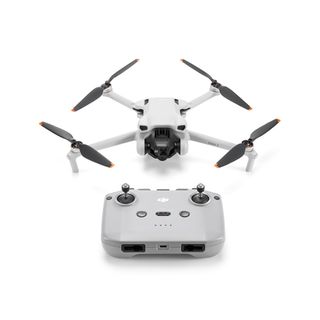
Best entry-level drone overall
The DJI Mini 3 offers the best image quality available in a beginner model, with the ability to rotate the camera 90° for portrait format shooting.
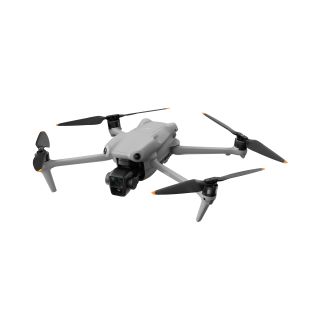
Best premium entry-level drone
Sitting between the DJI Mini 4 Pro and the DJI Mavic 3 Pro in all areas, the DJI Air 3 offers an incredibly versatile camera alongside great all-round performance.
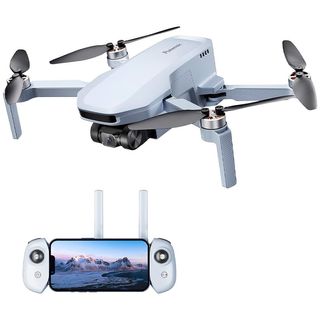
Best cheap entry-level drone
If you're looking for the best entry-level drone on a budget, the Potensic Atom SE is exactly what you need with up to 4K video and great build quality.
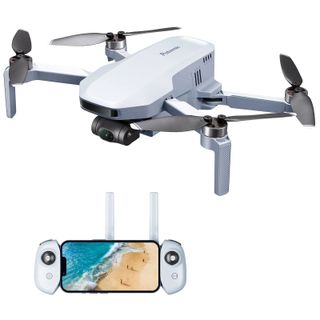
Best cheap 3-axis gimbal drone
The Potensic Atom is an inexpensive sub-250g model capable of capturing up to 4K video and photos in both Raw and JPEG while rivalling the DJI Mini 3.
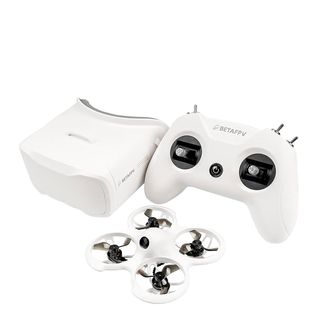
Best FPV drone for beginners
The BetaFPV Cetus Pro Kit comes with everything you need to get started with FPV flight including FPV goggles, a controller, drone, batteries and accessories.
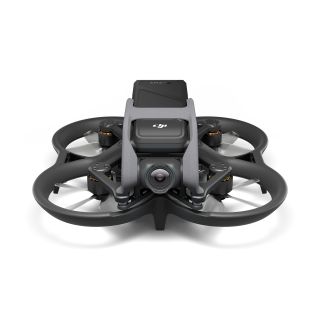
Best FPV drone for video
The DJI Avata may be a professional-level FPV drone, but it’s also incredibly easy to fly and capture immersive 4K video when controlled with the DJI Motion Controller.
Load the next 4 products...
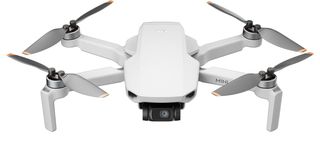
Best affordable lightweight drone
The DJI Mini 4K is DJI's first entry-level model to offer 4K video capture. Image quality is impressive for the lowest cost DJI model available, with commendable performance thrown in for good measure.
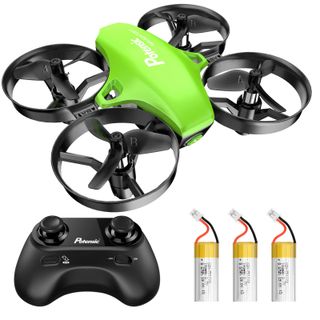
Best indoor entry-level drone
The Potensic A20 may not have a camera, but robust flight controls and flight speeds ideal for indoor flight make this a great option for children and beginners.
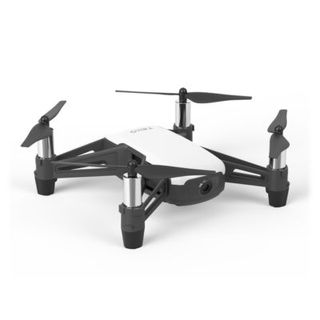
Best drone for children
The DJI Ryze Tello is an extremely basic indoor drone that comes with propeller guards and can be controlled using a smartphone. Plus, it's inexpensive.
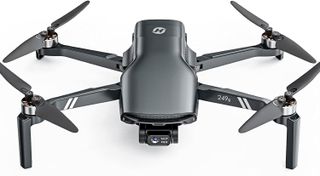
Best powerful entry-level drone
The Holy Stone HS900 is Holy Stone's best drone to date and marks a significant improvement in image quality, features and flight performance to provide a drone that's a great option for beginners.
Best entry-level drones we recommend in 2024
Why you can trust Space.com
Best entry-level drone overall






DJI Mini 3
Our expert review:
Specifications
Reasons to buy
Reasons to avoid
✅ You're a social media content creator: It has excellent image and video quality, plus it can shoot vertically, which is ideal for social media content.
✅ You don't want to register it: It's in the sub-250g category, so no registration needed!
❌ You're on a tight budget: While it's certainly very affordable for a drone of its caliber, anyone working with a tight budget might need to consider something slightly cheaper.
🔎 With identical image quality to the Mini 3 Pro, the DJI Mini 3 comes with a more beginner-friendly price at the cost of a handful of missing features. ★★★★
The DJI Mini 3 is an incredibly easy to use drone and is capable of capturing high-quality landscape and portrait format photos and videos. What's more, its foldable design makes it easy to carry around and the sub-250 g weight make it much less restricted than larger drones, which is perfect for beginner pilots just getting started.
The Mini 3 uses the same camera as the more advanced Mini 3 Pro, albeit with some reduced functionality. But the key point here is that image quality and the main features the camera has to offer are identical, as we found in our DJI Mini 3 review. The camera offers a 24mm equivalent focal length, a fixed f/1.7 aperture, a 1/1.3-inch 12MP sensor and the ability to rotate the camera 90° to shoot photos and videos in both landscape and portrait orientations.
You can take photos in both RAW and JPEG formats with this camera, and it can record video at up to 4K resolution at 30 frames per second using the Normal color profile. However, it doesn't support the flat D-Cinelike profile for video. Unlike the Mini 3 Pro, this model doesn't have collision avoidance, so you need to be careful when flying near things like trees. But it does have Quickshots, which are pre-programmed flight patterns that make it easy to capture professional-looking videos with just a tap, perfect for beginners.
- Read our full DJI Mini 3 review
| Attributes | Notes |
|---|---|
| Design | Small and lightweight folding design. |
| Performance | Easy to set up and fly. |
| Functionality | Up to 4K 30fps video. |
Best premium entry-level drone









DJI Air 3
Our expert review:
Specifications
Reasons to buy
Reasons to avoid
✅ You need multiple focal lengths: This versatile drone is equipped with dual cameras offering 24mm and 70mm equivalent focal lengths, making it suitable for photography and video.
✅ You need more power: Sub-250g drones are great for beginners, but they can't handle winds as strong as more powerful drones such as this.
❌ You need a small and lightweight drone: At 25.4oz / 720g, it's not the lightest option out there.
❌ You'd like the best image quality: The Air 3's image quality is excellent, but it's not as good as that of the Mavic 3 series drones.
🔎 With dual cameras, a mid-size folding design and enough power to handle windier conditions than smaller and lighter mini drones, the DJI Air 3 is an excellent and, indeed, versatile drone for beginners and more experienced drone pilots alike. ★★★★½
The DJI Air 3 is an impressive mid-sized model featuring a dual camera offering focal lengths equivalent to 24mm and 70mm. These two cameras have their own 1/1.3-inch sensor, which is the same sensor used in the DJI Mini 3 and Mini 4 Pro, meaning image quality is fantastic. So, as well as being able to capture more distant subjects, the Air 3 can also shoot vertically, record 4K footage in slow motion and capture photos at 48MP resolution.
The Air 3 sits within the medium size and weight band with a weight of 25.4oz (720g) and a foldable design that makes it much more compact for transportation and storage. Size and weight will be a negative for some people, but the advantages these bring are more power than smaller drones and a maximum wind resistance of 27mph. Plus, larger batteries provide flight times of around 35 minutes before return to home is automatically initiated when the battery reaches 20%, which we found in our DJI Air 3 review.
You might think all these features are too much for a beginner, but with GPS positioning, collision detection from all sides and advanced return-to-home capability, this drone is incredibly safe and simple to fly. Of course, you still need to be cautious, but it's packed with top-notch safety features.
On top of that, it captures great photos and videos, tracks subjects well and you won't outgrow it as your skills grow.
- Read our full DJI Air 3 review
| Attributes | Notes |
|---|---|
| Design | Classic DJI folding desgin. |
| Performance | Up to 46 min flight time. |
| Functionality | Quick shots, Hyperlapse, slow motion video, omnidirectional obstacle avoidance sensors. |
Best cheap entry-level drone









Potensic Atom SE
Our expert review:
Specifications
Reasons to buy
Reasons to avoid
✅ You're on a budget: This is one of the more affordable entry-level drones on this list.
✅ You don't want to register it: It's in the sub-250g category, so it doesn't need registering.
❌ You want lots of camera controls: The only camera setting you can control is exposure compensation, everything else is automatic, plus it's FPV style.
❌ You want collision avoidance: This drone doesn't have it, so you'll need to be careful when flying.
🔎 The Potensic Atom SE redefines what inexpensive entry-level drone models are capable of alongside great build quality, but camera control is limited despite producing reasonably sharp images. ★★★★
DJI may be the best-known drone manufacturer dominating the market, but there are some strong contenders out there for beginners and the Potensic Atom SE is one of them. Weighing in at just 245 g and sporting a folding design, this is a highly portable beginner drone is a great alternative for beginners on a budget looking for a small and lightweight drone.
The controller attaches to your smartphone and is comfortable and straightforward to use. Despite its affordability, you still get some helpful additional features like GPS positioning, Return to Home, and some basic automated flight modes to get you going. During our Potensic Atom SE review, we found the flight controls tended to be a little oversensitive, and this drone doesn't come with any obstacle avoidance technology, so you'll have to be careful when learning how to fly it.
Considering its price, the camera on this drone is pretty good. It uses a 1/3-inch 12MP Sony CMOS sensor with a wide 118-degree field of view. With this setup, you can record 4K video at up to 30FPS and take still photos in both JPEG and RAW formats. However, if you're a more experienced photographer, you might find the camera's settings somewhat limited, as most of them are automatic.
Despite this, the pictures generally come out well, with only a slight darkening around the edges in photos and none in videos. Overall, we think most beginners would be satisfied with how well the camera performs on this drone.
- Read our full Potensic Atom SE review
| Attributes | Notes |
|---|---|
| Design | Small folding design (similar to DJI). |
| Performance | Image quality ok but not amazing. |
| Functionality | Limited controls and flight patterns. |
Best cheap 3-axis gimbal drone








Potensic Atom
Our expert review:
Specifications
Reasons to buy
Reasons to avoid
✅ You're on a budget: This is simply the best inexpensive sub-250g drone available that can capture up to 4K video.
✅ You want a lightweight model: Sub-250g drones that fold for transportation and storage are incredibly comfortable to carry.
❌ You require a flat video profile: Professionals and advanced enthusiasts may want to color grade their video footage, but the Atom doesn’t offer a flat color profile.
❌ You need to fly in strong wind: While every drone has a maximum wind resistance, smaller drones typically have a lower resistance than larger and more powerful models.
🔎The Potensic Atom may not be quite as slick as its DJI Mini counterparts, but it’s the closest inexpensive competitor that blows the other competition out of the water thanks to a 3-axis gimbal, clear 4K video and smooth flight. ★★★★
The Potensic Atom builds on the popularity of the Atom SE to deliver a similar drone but one that features a 3-axis gimbal and greatly improved camera functionality. It set a new benchmark for drones of its type, being one of the first beginner models to offer 4K video capture alongside photos in both JPEG and Raw, all for an affordable price.
Its sleek dimensions of 3.5 x 5.6 x 2.3 inches (88 x 143 x 58mm) when it's folded up and 8.3 x 6.0 x 2.3 inches (210 x 152 x 58mm) when unfolded also make it a great portable option, while it weights under the critical 250g mark. And with a flight time of 25 minutes on a single charge, you will get reasonable purchase from the Potensic Atom. Plus, it has a level 5 wind resistance, meaning it can withstand winds of up to 24mph.
In use, the Atom is easy to set up and fly, with GPS positioning holding the drone in position when hovering and providing a reliable return to home and subject tracking functionality. There’s no collision avoidance, which is unsurprising given the low cost of the drone. But, with careful flying this won’t be a problem — we found it an absolute breeze to fly in our Potensic Atom review.
The Atom can record video in various resolutions: up to 4K at 30FPS, 2.7K at 30FPS and 1080p at 60FPS, offering beginners both flexibility and simplicity. You can also take photos in both RAW and JPEG formats. In terms of camera features, it sits between the DJI Mini 2 SE and the DJI Mini 3, albeit leaning closer to the latter. We think if you're new to drones and want something affordable but still worthwhile, the Atom could be a good choice for you.
- Read our full Potensic Atom review
| Attributes | Notes |
|---|---|
| Design | Small folding design with a 3-axis gimbal. |
| Performance | Manual control over the camera for photos and video. |
| Functionality | QuickShots automated flight patterns. |
Best FPV drone for beginners









BetaFPV Cetus Pro
Our expert review:
Specifications
Reasons to buy
Reasons to avoid
✅ You're on a budget: This is a very affordable beginner FPV-style drone and comes with a host of extras and accessories.
✅ Your priority is learning how to fly: This drone is aimed at those looking to improve their flying skills first.
❌ You want to capture photo or video: It can't record videos or shoot photos, so photographers will find it useless.
❌ You want to fly for a long time: The battery life is only up to 5 minutes, so you'll need to have either a lot of patience or a lot of spare batteries.
🔎 With a low cost and a complete kit with everything you need to get started, the BetaFPV Cetus Pro provides a low-risk entry point to learning how to fly FPV drones when compared to more expensive models. ★★★★
If first-person view (FPV) drones are something you'd like to try, with the ability to fly in manual/acro mode, the BetaFPV Cetus Pro is perfect for beginner FPV pilots. Coming in at less than $300 for a complete kit with everything you need to get started, the Cetus Pro is one of the best options for learning how to fly FPV drones, where you can dive, flip and roll the drone.
The Cetus Pro, however, is a good option for an entry-level drone, particularly because it comes with everything you might need. This includes a Cetus Pro Brushless Quadcopter, a LiteRadio 2SE Transmitter, VR02 FPV Goggles, two batteries, a USB battery charger with cable, four spare propellers, a propeller removal tool, a USB-C cable and a convenient carry case. Spare parts are also available for replacements if you ever have a crash.
The Cetus Pro Brushless Quadcopter has strong brushless motors that power its four propellers, all guarded by protective propeller guards to keep them safe during frequent crashes. It's incredibly compact, measuring just 4.6 x 4.6 x 1.4 in (117 × 117 × 35 mm) and weighing only 45.8g with the battery included, making it suitable for indoor or outdoor flights. Plus, it offers three flight modes, including Acro, and three speed modes, allowing you to begin at a slower pace and gradually progress as your skills improve.
The camera on the Cetus is used purely to provide a live feed to the analog goggles so you can enjoy an FPV view. The Cetus and the VR02 FPV Goggles do not, however, have the capability to record video so this drone is purely a learning tool, as we mentioned in our BetaFPV Cetus Pro review. The only additional accessories you might need in order to get started are an additional four-battery set that costs $26 / £21, and a battery charger for six batteries that costs $20 / £16.
- Read our full BetaFPV Cetus Pro review
- Read more: What are FPV drones?
| Attributes | Notes |
|---|---|
| Design | Built to withstand crashes. |
| Performance | Very short flight times (5 mins per battery). |
| Functionality | Turtle Mode flips the drone when upside down. |
Best FPV drone for video






DJI Avata
Our expert review:
Specifications
Reasons to buy
Reasons to avoid
✅ You want long flight times: Each battery has up to 18 minutes of flight time, which is impressive for an FPV drone.
✅ You want a drone you can grow with: It has specs and features to please beginners and more experienced fliers.
❌ You're a photographer: You can capture JPEGs, but as the horizon will almost always be wonky, there are better options for photographers.
❌ You don't want to register it: It weighs 410g, so it'll need to be registered.
🔎 FPV drones are notoriously difficult to fly, but with the DJI Avata anyone can capture immersive FPV video footage in stunning 4K resolution at up to 60 fps, and it’s a whole lot of fun to fly, too. ★★★★
The DJI Avata has been superseded by the Avata 2, but it's still available for sale and at a reduced price making it a compelling option for getting started with FPV. This drone features a cinewhoop design, which means it has propeller guards to help to avoid damage to the drone and obstacles in crashes.
It's also incredibly easy to fly with the DJI Motion Controller 2, and offers GPS positioning and downward sensors in some flight modes. Measuring 180 x 180 x 80cm and weighing 14.46 oz/410g with a battery, it has microSD card compatibility and comes with 20GB of onboard storage.
Even complete beginners with no experience flying FPV can pick up and fly with the DJI Avata, with this model making flying in Manual/Acro mode much easier than most. You can also capture stunning photos and crisp 4K footge without much of a hassle. As we highlighted in our DJI Avata review, you can use the DJI Motion Controller to fly the drone, with more advanced users also capable of picking up and using the DJI Motion Controller 2.
The video quality from the 48MP 1/1.7-inch CMOS sensor paired with an f/2.8 lens (which is like having a 12.7mm equivalent focal length) is outstanding. It can shoot in 4K at up to 60FPS, 2.7K at up to 100FPS and 1080p at up to 100FPS when using DJI Goggles 2. When using the DJI FPV Goggles V2, you can capture video in 2.7K and 1080p at up to 120 FPS. These specifications are impressive, especially considering how easy it is to fly the Avata, making it an excellent choice for beginners diving into FPV drones.
- Read our full DJI Avata review
| Attributes | Notes |
|---|---|
| Design | Robust cinewhoop design. |
| Performance | Excels at capturing video. |
| Functionality | Features augmented reality home point and Return to Home function. |
Best affordable lightweight drone






DJI Mini 4K
Our expert review:
Specifications
Reasons to buy
Reasons to avoid
✅ You're looking for your first drone: With most of the features you could need or want as a beginner, the DJI Mini 4K is a compelling option with solid flight performance.
✅ You want a drone from the market leader: DJI is the undisputed market leader, and although this is the company's cheapest model, it still manages to impress for the price.
❌ You want a better camera: The camera on the Mini 4K is great, but the best camera within the beginner class is found on the DJI Mini 3 with horizontal and portrait format shooting.
❌ You would like more features: This is a basic model that can shoot 4K video and photos in JPEG and RAW, but for more features consider the Potensic Atom and Holy Stone HS900.
🔎 The DJI Mini 4K is undoubtedly one of, if not the best entry-level drones in its price bracket. Flight performance is solid and although features are more basic than higher-end DJI drones, it remains a fantastic entry point for beginners. ★★★★★
The DJI Mini 4K is DJI's budget model, and is priced to squeeze the competition at the lower cost end of the market. DJI has traditionally avoided 4K video capture with its budget models, but the Mini 4K marks a shift for the market leader and puts the drone up against some stiff competition from the likes of the Holy Stone HS900 and Potensic Atom, which also features in our guide.
This is undeniably DJI's best-ever entry-level drone to date. Its 1/2.3-inch 12MP CMOS sensor can capture video in 4K up to 30 FPS, 2.7K up to 30 FPS, and 1080p up to 60 FPS. Photo capture is available in both JPEG and RAW formats, which is great for beginners and more experienced photographers alike.
Automatic Exposure Bracketing and Panorama capture are also available, alongside Quickshots automated flight patterns. As we stressed in our DJI Mini 4K review, we loved its overall performance.
The drone is palm-sized when folded and weighs just 8.7 oz / 249 g, making it both regulator-friendly and easy to carry. Wind resistance is rated at Level 5, which equates to up to 24 mph, while the advertised flight time of 31 minutes per battery charge comes in at a much more modest 21 minutes.
This is the point where the battery reaches 20% and return to Home is automatically initiated. It's still pretty good at this drone level, but having several batteries / the Fly More Bundle is well worth the investment.
- Read our full DJI Mini 4K review
| Attributes | Notes |
|---|---|
| Design | Compact and lightweight folding design. |
| Performance | Image quality is great considering the small sensor. |
| Functionality | Offers basic yet useful features for beginners. |
Best indoor entry-level drone






Potensic A20 Mini Drone
Our expert review:
Specifications
Reasons to buy
Reasons to avoid
✅ You would like a fun indoor drone: The A20 is undoubtedly a lot of fun to fly indoors and is designed to avoid damage to the drone and objects.
✅ You would like to learn drone controls before buying a more expensive model: This is an incredibly inexpensive drone with identical controls to camera drones.
❌ You would like a camera: With no camera, this is a drone that's mainly for fun and learning flight controls.
❌ You don't want to fly indoors: Indoor drone flight isn't for everyone, and the A20 isn't suited to outdoor flight.
🔎 The Potensic A20 Mini Drone may not have a camera, but it's an excellent indoor drone for children and beginners who would like to develop their flight skills. ★★★★
If you're looking for an incredibly inexpensive drone for you and your children, the Potensic A20 Mini Drone is a great option for getting started. It's designed for indoor flight since it lacks the power to handle wind, but with the same controls as camera drones, it's a great way to familiarise yourself with drone flight before splashing out on a more expensive model.
It's a great place to start flying, with a light on the front to show the direction it's facing. At 190g and measuring only 3.1 x 1.3 x 3.5 inches (78.7 x 31.8 x 88.9mm), you shouldn't expect this drone to cause any damage if it crashes inside, plus it has propeller guards that protect the drone as well as objects and people it crashes into.
There's no camera, so it won't suit anyone looking to take photos or videos with it, plus the features are quite basic and it isn't recommended for outdoor use, as we found in our Potensic A20 review. These features can either be an advantage or disadvantage depending on what you want to use the drone for. If you're purely looking to advance your flying skills, then it could be a great option for you.
The A20 uses the same controls as much more expensive drones, which makes it a fantastic learning tool for beginners. There’s even a hover feature that makes it behave almost identically to camera drones so you will undoubtedly gain flight confidence with the A20. The kit also comes with three batteries that take 10 minutes to charge and provide 10 minutes of flight time, so you can charge as you fly to extend flight times as much as you like.
- Read our full Potensic A20 review
| Attributes | Notes |
|---|---|
| Design | Looks like a micro whoop FPV drone. |
| Performance | Fun and easy to use with the same controls as camera drones. |
| Functionality | Flies well and can perform flips for fun. |
Best for children





DJI Ryze Tello
Our expert review:
Specifications
Reasons to buy
Reasons to avoid
✅ You're on a budget: It's incredibly affordable for those new to the world of drones.
✅ You want to learn the basics: It's a great option for kids or complete newbies who want to focus on learning the basics of flying.
❌ You're a content creator: The photo and video quality isn't particularly impressive, so content creators will want to look at other options.
❌ You want to fly it outside: It's not suitable for use in anything more than a light breeze.
🔎 The DJI Ryze Tello is the perfect drone for those only just starting out to fly drones, it's small, and easy to use and the propeller guards and onboard sensors make accidents much less likely, and therefore flying the drone even more enjoyable. ★★★★
The DJI Ryze Tello is an incredibly easy to fly indoor drone with a 5MP camera capable of capturing 720p videos. It's certainly not going to provide longevity in your drone flying journey, but as a starter model it's an easy drone to set up and use to familiarise yourself with drone flight controls. We were impressed with the drone in our DJI Ryze Tello review, pointing out it's perfect for beginners and children alike.
Controlling this drone is also as easy as downloading an app onto your smartphone and pairing the two up. It offers smooth and responsive controls without being too sensitive, like others out there, and it's also a great option for indoor flight given its slender size. In fact, we'd probably recommend flying this indoors given winds tend to knock the DJI Ryze Tello off course quite easily.
It's got some great safety features, like sensors underneath to prevent crashes and guards around the propellers to keep both them and your home safe if it does bump into something. We were amazed by how far it can go — up to 100 meters on WiFi control, which is really good. Plus, it has some fun built-in moves that kids will love trying out.
Of course, to keep the cost down, they had to make some trade-offs. For example, it doesn't have a gimbal for really smooth video, and the battery life is a bit disappointing — it takes about an hour to charge but only gives you 11 minutes of flight time. However, if you're ok with these drawbacks and don't need the best camera quality, this could be a fantastic, budget-friendly drone to start learning how to fly.
- Read our full DJI Ryze Tello review
| Attributes | Notes |
|---|---|
| Design | Incredibly lightweight — only 80g. |
| Performance | High speed for its size with very responsive controls. |
| Functionality | Some cool 'trick flight' features. |
Best budget model for features






Holy Stone Sirius HS900
Our expert review:
Specifications
Reasons to buy
Reasons to avoid
✅ You're on a budget: The HS900 is competitively priced considering the features on offer, so you get quite a lot for your money.
✅ You're looking for a DJI alternative: Not everyone loves DJI drones, so if you fall into this category the HS900 is worth considering.
❌ You need advanced features: The HS900 is incredibly feature-packed for the price, but it doesn't offer obstacle avoidance like the DJI Mini 4 Pro.
❌ You would like a larger drone: Being a sub-250 g model, the HS900 lacks the power of larger drones and the higher wind resistance of these models.
🔎 The Holy Stone HS900 is an impressive drone that's reasonably priced. Image quality is good and plenty of features are on offer, while overall flight performance can’t be faulted. ★★★★
Holy Stone is well-known as a beginner drone manufacturer, and the Holy Stone Sirius HS900 is a sub-250g drone and the Chinese company's best drone to date. The camera provides excellent performance for capturing photos and videos, while flight performance is impressive. It's also packed with features that beginner to intermediate pilots will love.
Image quality from the camera featuring a Sony 1/2.3 in 48MP CMOS sensor can't be faulted. Photo capture is available in 4K dimensions (3840 x 2160 px) and 48MP with image dimensions of 8192 x 4608 px. Video can be captured in 4K at 30 fps and 1080p at 60 fps, while the 3-axis gimbal and Electronic Image Stabilization effectively smooth out footage. We were impressed by the overall performance of the HS900 in our full review.
Flight times typically average around 22 minutes per battery before Return to Home is initiated automatically when the battery level reaches 20%, which isn't class-leading and sits closer to the lower end of the scale. It's still not bad though and marginally beats the DJI Mini 4K.
Wind resistance is rated at level 5 which equates to wind speeds of up to 24 mph, which is good for a drone that's palm-sized when folded. Other features include Cruise Control, Time-lapse and automated flight patterns which include Point of Interest, Spiral up, Tap Fly (waypoints), Gesture Selfie, One-key Ascension and Catapult.
- Red our full Holy Stone Sirius HS900 review
| Attributes | Notes |
|---|---|
| Design | Lightweight folding design. |
| Performance | Image quality is a huge improvement over previous models.. |
| Functionality | Time-lapse and Quickshots among many others. |
Buying advice
Many drones aimed at beginners are basic models in terms of camera functionality and overall features. But they offer the same basic controls as larger and more expensive models, so you can get a feel for how they work without fearing losing a small fortune if you're unlucky enough to crash.
Even if you have a large budget, it doesn't hurt to buy a cheap model that costs less than $250/£250 to get started, some even cost less than $50/£50. Then, once you feel confident with the controls and have inevitably outgrown the camera functionality and overall features, you'll know when it's time to move up to the next level.
One crucial point you must consider as a beginner is the weight of the drone you're aiming to buy. Drones that weigh less than 249g don't require you to register with the FAA (US) or CAA (UK) to fly them legally which removes one small hurdle in the path to drone flight. So, once you've chosen the model that's right for you, get ready to see the world in a completely new and exciting way.
How we tested
We typically test entry-level drones in different locations, environments, and weather conditions (apart from rain) to assess flight performance, flight features, overall handling and image quality for both photo and video capture. All entry-level drones offer a variety of features so only those available can be tested, but all features are explored to cover performance and ease of use.
Drones are flown using manual flight patterns to test the connection between the aircraft and the controller, latency between the two, the accuracy of the controls, app connection and reliability and flight in general. And if automated flight patterns and collision avoidance are available, these are always tested to asses accuracy.
All testing is conducted in a way that meets local aviation laws and restrictions to ensure that all flights are safe and legal. Drone laws vary from region to region, so you must check local laws to ensure that you’re following the guidelines for your country before embarking on your first drone flights.
Join our Space Forums to keep talking space on the latest missions, night sky and more! And if you have a news tip, correction or comment, let us know at: community@space.com.
Get the Space.com Newsletter
Breaking space news, the latest updates on rocket launches, skywatching events and more!
James is an award-winning freelance landscape and portrait photographer, as well as a highly experienced photography journalist working with some of the best photography magazines and websites with a worldwide audience. He’s also the author of The Digital Darkroom: The Definitive Guide to Photo Editing. www.jamesaphoto.co.uk
- Kimberley LaneContributing writer
- Tantse WalterContributing Writer
- Jase Parnell-BrookesManaging Editor, e-commerce